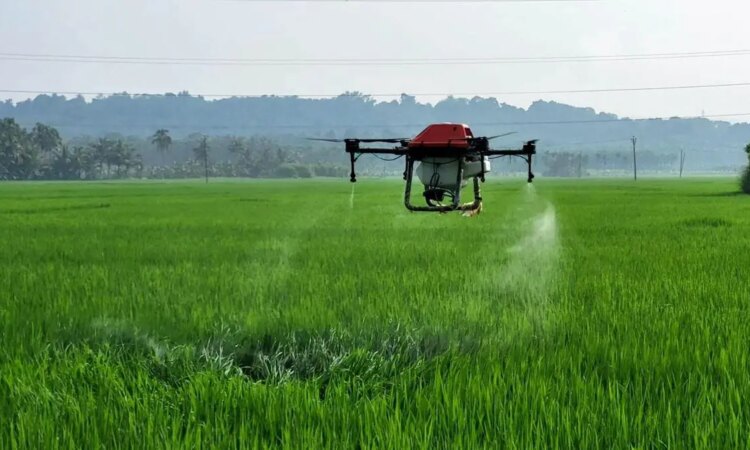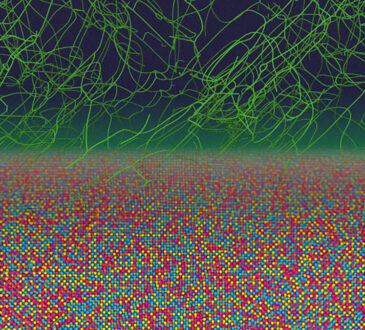
The textile industry finds itself at a turning point. Climate shocks, rising input costs and volatile trade policies have made the journey from farm to fashion far less predictable than it once was. For India — a nation that feeds cotton to the world, and clothes millions of us — this is a challenge and an opportunity. The soil itself may contain the answer, many believe.
And yet, regenerative agriculture — a philosophy that’s about restoring, not just sustaining or depleting, natural systems — is quietly transforming the way we think about sustainability in fashion and textiles. This is not just a question of reducing chemicals or going organic. It’s re-bolstering the health of soil, increasing biodiversity, retaining water better and repairing what has been made out of balance in ecosystems that modern farming has pushed to the brink.
For cotton and other natural fibres, that change could be game-changing. Healthy soil yields more resilient crops that demand less irrigation, fewer pesticides, and provide better yields even in consecutively erratic weather. Farmers have less risk, and manufacturers have a more dependable source of raw material.
Why it matters to textile exports
In an interconnected industry such as textiles, everything comes down to reliability — of supply but also of quality and price and trust. Regenerative practices strengthen all four. Farms that adhere to these principles are often less susceptible to droughts or floods, something important when supply chains stretch across continents.
At the same time, the world’s biggest brands are increasingly asking tough questions about where their fibres originate. Traceability has gone from buzzword to baseline. Initiatives including the Textile Exchange’s Regenerative Agriculture Outcome Framework are establishing measurable targets for soil carbon, biodiversity and farmer wellbeing. Indian exporters that can prove their fibres come away from such farms will no doubt enjoy an advantage in the global marketplace increasingly motivated by ethics and evidence.
The economics, too, are shifting. Bringing in regenerative approaches may require short-term investment, both in training and the diversification of crops, but it is also a long-term way to reduce the reliance on expensive chemical fertilisers and stabilise yields. In other words, it reduces both environmental as well as financial risk — two worries that weigh on the mind of every exporter today.
India’s chance to lead
India already has something few rivals can boast: an end-to-end textile ecosystem, from farm to finished garment. The bridge between sustainable agriculture and industrial supply chains remains the missing link. Think of cotton clusters throughout Maharashtra, Gujarat or Telangana where each bale can be tracked to a farm that regenerates land rather than erodes it.
And businesses around the world are heading in this direction. The luxury group Kering, for instance, has a target in place to convert one million hectares of farmland to regenerative agriculture by 2025 to provide its cotton, wool and leather. Indian exporters who get on board too soon can tell a better tale — one that marries rural empowerment to global fashion’s sustainability charge.
For rural India, that could be the invitation to something more than better soil. Regenerative practices enhance crop diversity, support local knowledge and provide farmers access to premium markets. It’s a system that builds livelihoods and, in turn protects the entire textile chain from climate and price shocks.
Navigating global headwinds
The timing is more urgent than ever. New tariffs are putting a strain on the global apparel trade, especially in the United States, where higher import duties have made Indian textiles less competitive. Many brands have already started to source more from Bangladesh and Vietnam in order to balance the cost difference.
In an environment like this, the India story can no longer be a cost factor alone. Regenerative agriculture offers a way out of the trap. Textiles from regenerative farms have an inherent value that accrues (transparency, traceability and climate responsibility) that is pulling even in tariff-impacted markets. They attract customers who demand evidence of purpose, not just low prices.
Increased domestic fibre supply will also allow India to reduce its dependence on imported inputs which tend to get costlier during global disruptions. A self-sustaining, sustainable raw material base serves in both economic and environmental stormy weather as a buffer.
The next leap forward for the textile industry is not faster machines or larger production facilities, but healthier soil. The future of Indian fashion could indeed start in the cotton fields of Vidarbha or on the looms of Kutch, in which farmers and makers operate with — not against — the land.
As world consumers shift from valuing price to purpose, regenerative fibres will provide India with a unique opportunity: ecological restoration and economic vibrancy. Supported by smart policy, brand collaboration and industry resolve, regenerative agriculture can transform India from a supplier to becoming the sustainability leader.
We must see soil not as a resource to be mined, but as a living foundation for food and prosperity. And therein lies the real strength of India’s textile story — not just as a global player, but built on its own foundation of balance and renewal: a place where land and water are revered for what they return.
The author is chairman of the ICC National Expert Committee on Sustainability.
Published on November 1, 2025




